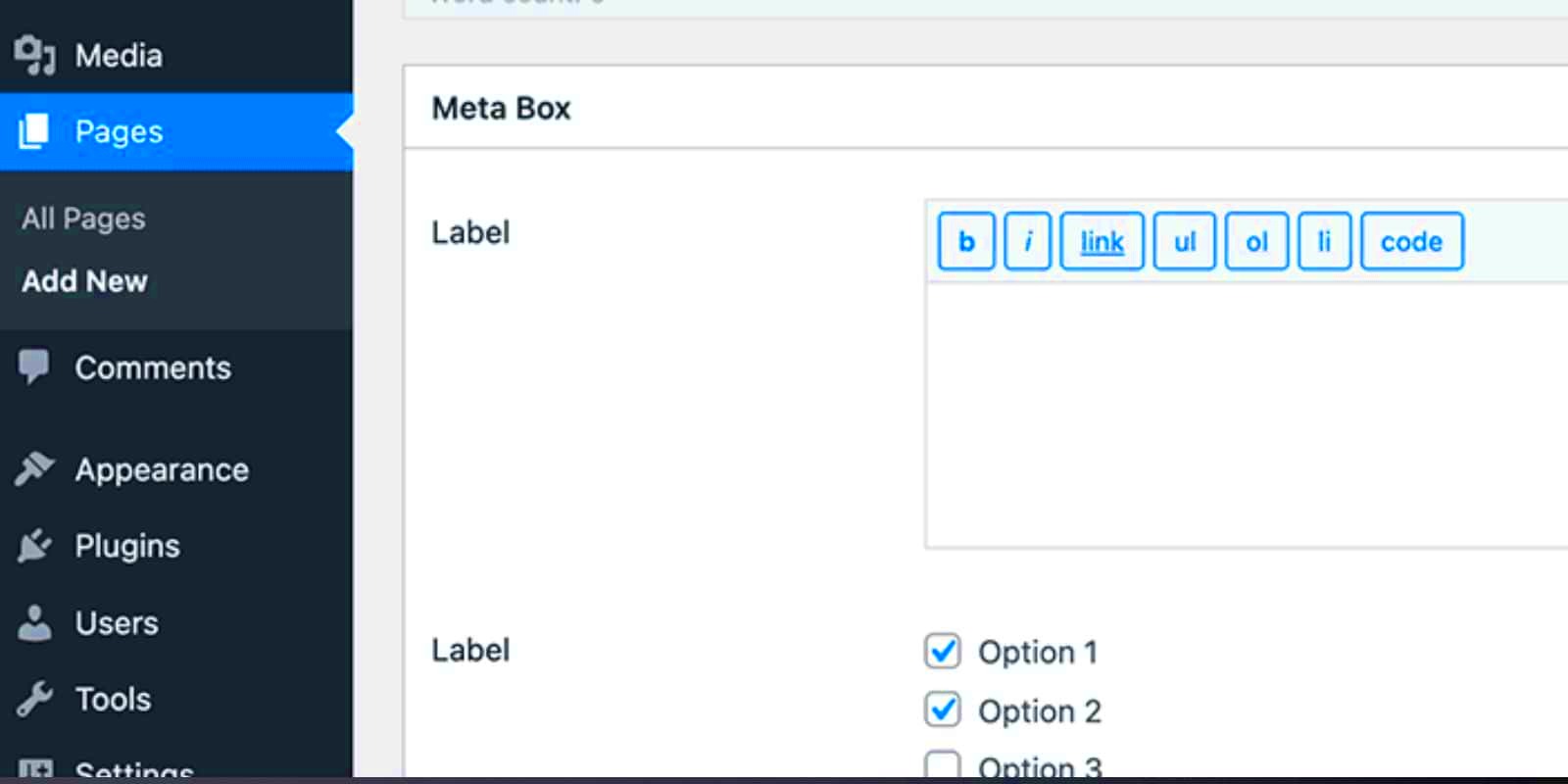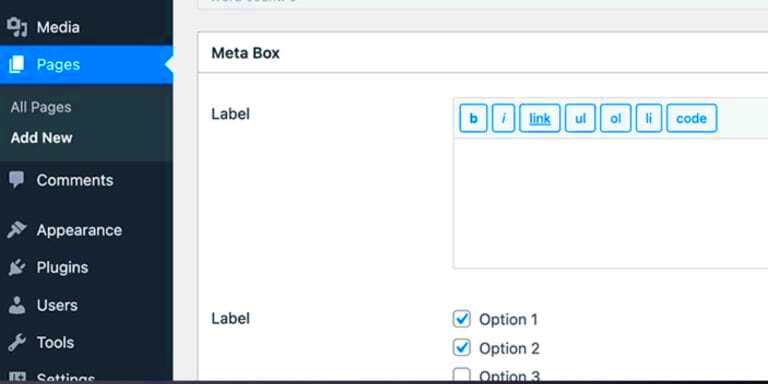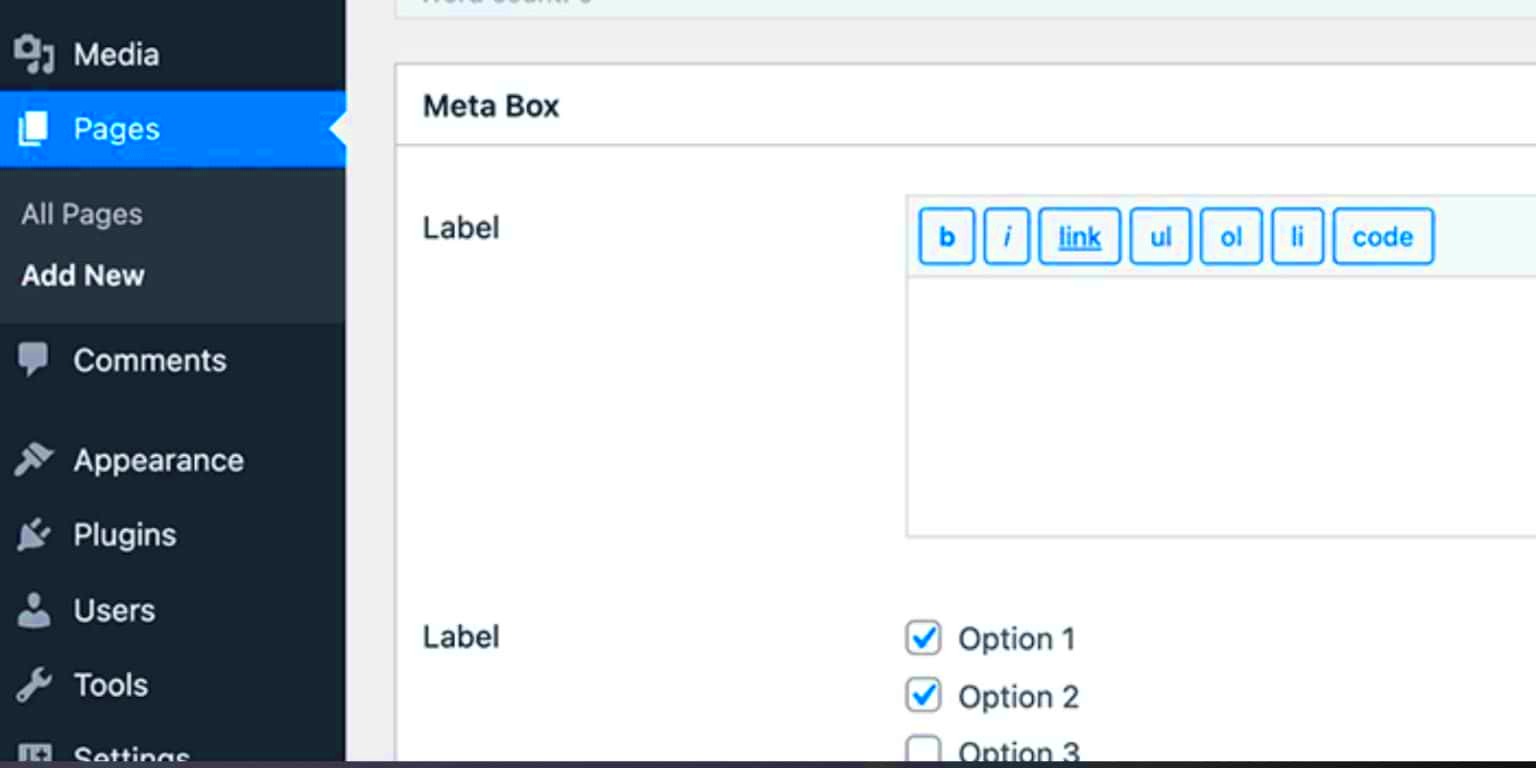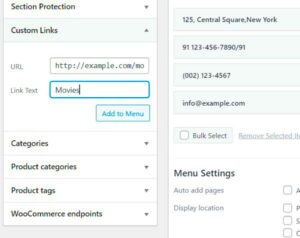When diving into the world of WordPress, one of the most powerful features at your disposal is the Query Loop. Simply put, a Query Loop enables you to fetch and display specific pieces of content from your database. Think of it as a way to filter and organize your posts, pages, or custom post types based on particular criteria.
Whether you’re creating a blog, a portfolio, or an online shop, understanding Query Loops can significantly enhance how you present your content. In this post, we’ll unpack what Query Loops are and how they can be seamlessly integrated with Custom Field Metaboxes to create a more efficient workflow for managing and displaying your content.
Understanding Custom Field Metaboxes

Custom Field Metaboxes are a fantastic feature in WordPress that allows you to add additional information or metadata to your posts, pages, or custom post types. They offer a way to extend the default functionality of WordPress by enabling you to store extra information that is relevant to your content.
Here’s what you need to know about Custom Field Metaboxes:
- Purpose: Custom Field Metaboxes provide a space for adding extra information that isn’t covered by standard WordPress fields. This could be anything from product specifications in an e-commerce site to additional text highlights in a blog post.
- Creation: You can create Custom Field Metaboxes using various plugins or by coding them directly into your theme or plugin. Popular plugins include ACF (Advanced Custom Fields) and Meta Box.
- Types of Fields: You can add different types of input fields, such as text boxes, checkboxes, radio buttons, and image uploaders. This versatility allows you to tailor the data according to your needs.
- Data Storage: Information entered into Custom Field Metaboxes is stored in the WordPress database, often as post meta. This means you can retrieve it using WordPress functions in your templates or loops.
In essence, Custom Field Metaboxes are the secret sauce that adds depth and personalization to your content management system. They work harmoniously with Query Loops, making your data display as dynamic as you need it to be.
Setting Up Custom Fields in WordPress

When it comes to enhancing your WordPress site with tailored data, setting up custom fields is a game-changer. Custom fields allow you to add unique information associated with your posts or pages. This can be anything from user ratings to custom event dates. Let’s break down how to get started!
First, you need to enable custom fields in your WordPress dashboard. Here’s how you can do it:
- Navigate to the post or page where you want to add custom fields.
- Click on “Screen Options” at the top right corner of the page.
- Check the box next to “Custom Fields” to make the custom fields section visible.
Once you have it visible, you can start adding custom fields. To create a custom field:
- Scroll down to the “Custom Fields” section on your post editor.
- Click on “Add New” to create a new custom field.
- In the “Name” box, input your custom field’s name.
- In the “Value” box, input the corresponding value (this could be any data type such as text, number, or even HTML).
- Click on “Add Custom Field” to save.
It’s that simple! A good practice is to keep your custom fields well-organized and consistently named. This makes querying the data easier down the line. If you want to avoid manual input for each post, consider using custom field plugins like Advanced Custom Fields (ACF) or Meta Box, which provide intuitive interfaces for managing custom fields.
Creating a Query Loop for Custom Field Data

Now that you have set up your custom fields, it’s time to put that data to work by creating a query loop! A query loop allows you to fetch and display posts based on certain parameters, which can include custom field data. Let’s dive into the steps necessary to create your own query loop.
Firstly, you can use the WP_Query class to create custom loops that fetch posts with specific metadata. Here’s a basic framework:
$args = array( 'post_type' => 'post', 'meta_query' => array( array( 'key' => 'your_custom_key', 'value' => 'your_custom_value', 'compare' => 'LIKE', ), ),);$query = new WP_Query($args);
In this code snippet:
post_type: Defines the type of post you want to query. It could be ‘post’, ‘page’, or any custom post type you’ve created.meta_query: This is where the magic happens! Here, you specify the custom field key and its corresponding value that you want to query.
Next, you can loop through the results:
if($query->have_posts()) { while($query->have_posts()) { $query->the_post(); the_title(); // Display the post title the_content(); // Display the post content }} else { echo 'No posts found';}wp_reset_postdata();
Here’s what this code does:
have_posts(): Checks if there are any posts to display.the_post(): Prepares post data for display.wp_reset_postdata(): Restores the global post data to the current post in the main query.
Essentially, this loop allows you to dynamically display content based on your custom fields. Feel free to customize it further to meet your needs! Remember, the effectiveness of your query loop heavily relies on how well you set your custom fields, so keep that in mind as you proceed!
Integrating Custom Field Metaboxes with Query Loops

Are you ready to take your WordPress site to the next level? Integrating custom field metaboxes with query loops opens up a world of possibilities for customizing the way your content is displayed. Let’s break it down step by step.
First off, what are custom field metaboxes? Well, they are additional fields you can add to your post or page editing screen, allowing you to input more specific data related to your content. Think of them as extra pockets for storing information that doesn’t fit into the standard WordPress structure. Common examples include things like ratings, prices, or event dates.
Now, when it comes to integrating these with query loops, the magic happens! Query loops are powerful tools that let you fetch and display your WordPress posts in various ways. By leveraging custom fields within these loops, you can fine-tune the display of your posts based on the additional data you’ve collected.
Here’s a simple outline on how to get started:
- Create Custom Field Metaboxes: Use a plugin or code to create your metaboxes. Popular plugins include Advanced Custom Fields (ACF) or Custom Field Suite.
- Input Data: Add data to your new custom fields for each relevant post or page.
- Modify Your Query Loop: Adjust your query loop code to include custom fields. You can filter or sort your results based on this metadata.
- Display Your Data: Finally, within the loop, make sure you retrieve and display the custom field values alongside your normal post content.
With these steps, you can create dynamic and customized displays on your WordPress site that are tailored to your audience’s needs!
Use Cases for WordPress Query Loops and Custom Fields
When it comes to using WordPress query loops with custom fields, the possibilities are virtually endless! Let’s explore some practical use cases that can help you understand how you might implement these features on your own site.
1. Product Listings: If you run an e-commerce site, you might use custom fields to store product details, such as price, size, and SKU. Your query loop can fetch and display this data in a grid or list format, helping customers easily browse through your inventory.
2. Event Management: Using custom fields to store event dates, locations, and ticket prices means you can create a query loop that presents an up-to-date list of upcoming events. This is particularly helpful for community-centric or event-focused websites.
3. Portfolio Showcases: For creatives, integrating custom fields that hold information like project descriptions, tools used, or client names can enhance the presentation of your portfolio projects. Query loops can dynamically pull this information, helping you create visually appealing showcases.
4. User Reviews: If users can submit reviews or ratings, store this information in custom fields. You can then craft a query loop to display posts based on their ratings, or even showcase the top-rated products or content.
5. Dynamic Testimonials: Want to feature testimonials on your site? Use custom fields to store customer names and their feedback. With a query loop, you can highlight these testimonials in an engaging way.
As you can see, the integration of query loops and custom fields can elevate your WordPress site from standard to stellar. Think about the unique needs of your site and how these tools can help you fulfill them!
Best Practices for Optimizing Query Loops
When it comes to optimizing query loops in WordPress, there are several best practices you should consider. These practices not only enhance performance but also improve user experience. Here are some tips to keep in mind:
- Use the Right Query Arguments: Ensure that your query arguments are as specific as possible. This means only retrieving the data you need. For instance, if you only need posts from a particular category, specify this in your query.
- Limit the Number of Queries: Avoid running multiple queries within a single loop. Instead, try to consolidate your queries where possible. This can significantly reduce the load on your server and speed up page load times.
- Caching: Implement caching strategies to store the results of complex queries. Using plugins like W3 Total Cache or WP Super Cache can help serve cached pages instead of running the query every time a page is visited.
- Pagination: If you’re dealing with a large number of posts, incorporate pagination. Instead of loading all posts at once, loading a limited number per page not only enhances performance but makes your site more user-friendly.
- Offload Heavy Processing: If your queries involve heavy processing or custom calculations, consider using asynchronous calls with Ajax to lighten the load during page load times.
- Profiling and Analyzing Queries: Use tools like Query Monitor to profile your queries. This will help you identify slow queries that might be affecting your site’s performance.
By following these best practices, you can create efficient query loops that contribute to a faster, more responsive WordPress site.
Troubleshooting Common Issues
When working with WordPress query loops and custom field metaboxes, you might run into some common issues. Thankfully, most of these can be troubleshot quite easily. Here’s a breakdown of some frequent challenges and how to address them:
| Issue | Possible Causes | Solutions |
|---|---|---|
| No Results Returned | Incorrect query parameters, missing meta fields, or empty database entries. | Double-check your query parameters and ensure that the meta fields exist and contain values. |
| Performance Lags | Too many queries being executed or poorly optimized loops. | Consolidate queries, implement pagination, or use caching to improve performance. |
| Unexpected Output | Incorrect use of query arguments. | Review your loop structure and the arguments being passed to ensure they’re set correctly. |
| Conflict with Other Plugins | Plugins interfering with query execution or custom fields. | Deactivate other plugins one by one to identify the conflict and resolve it accordingly. |
| Custom Field Not Displaying | Meta fields may not be saved correctly. | Ensure that you are saving the custom fields properly and they are registered in your loop. |
Don’t worry if you encounter these issues! Most of the time, a little bit of investigation and adjustment can lead you to the right solution.
Conclusion: Leveraging the Power of Custom Fields and Query Loops
Incorporating custom fields and query loops in your WordPress projects can significantly enhance the way you manage and display content. By utilizing custom field metaboxes, you enable a tailored content creation process that suits your specific needs, ultimately enriching the user experience on your website. Here are some key points to consider:
- Enhanced Flexibility: Custom fields allow you to add diverse types of data beyond standard post information.
- Better Organization: Query loops can help you structure content dynamically, allowing you to pull specific posts based on custom field values.
- Improved User Experience: Tailoring content based on user interactions and preferences keeps visitors engaged.
- SEO Benefits: Optimizing content using custom fields can improve your search engine visibility.
Using custom fields in conjunction with query loops can transform how you manage content in WordPress. Here’s a simple table summarizing the benefits:
| Feature | Description |
|---|---|
| Data Customization | Create fields tailored to your content needs. |
| Dynamic Content Display | Use query loops to show relevant posts based on custom criteria. |
| Scalability | Manage content effectively as your site grows. |
| Ease of Use | User-friendly interfaces streamline content creation. |
By effectively using these powerful tools within WordPress, you can not only enhance your website’s functionality but also create a more engaging interface for your users. Start experimenting with custom fields and query loops, and unlock the full potential of your WordPress site!



